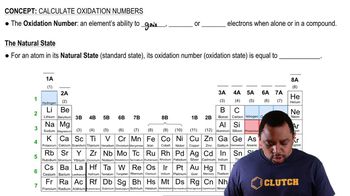Here are the essential concepts you must grasp in order to answer the question correctly.
Oxidation Numbers
Oxidation numbers are a way to keep track of electrons in chemical compounds. They indicate the degree of oxidation of an atom in a molecule, helping to determine how many electrons are gained or lost during a reaction. For phosphorus, oxidation numbers can range from -3 to +5, reflecting its ability to form various compounds depending on the reaction conditions.
Recommended video:
Combustion Reactions
Combustion reactions involve the reaction of a substance with oxygen, typically producing heat and light. In the case of phosphorus, combustion can lead to the formation of different oxides depending on the availability of oxygen. A limited supply of oxygen often results in the formation of lower oxidation state oxides, such as phosphorus trioxide (P2O3), rather than higher oxidation state oxides like phosphorus pentoxide (P2O5).
Recommended video:
Phosphorus Oxides
Phosphorus oxides are compounds formed from phosphorus and oxygen, with varying oxidation states. The most common oxides include phosphorus trioxide (P2O3) and phosphorus pentoxide (P2O5). The specific oxide formed during combustion depends on the oxidation state of phosphorus and the amount of oxygen available, influencing the properties and reactivity of the resulting compound.
Recommended video:




